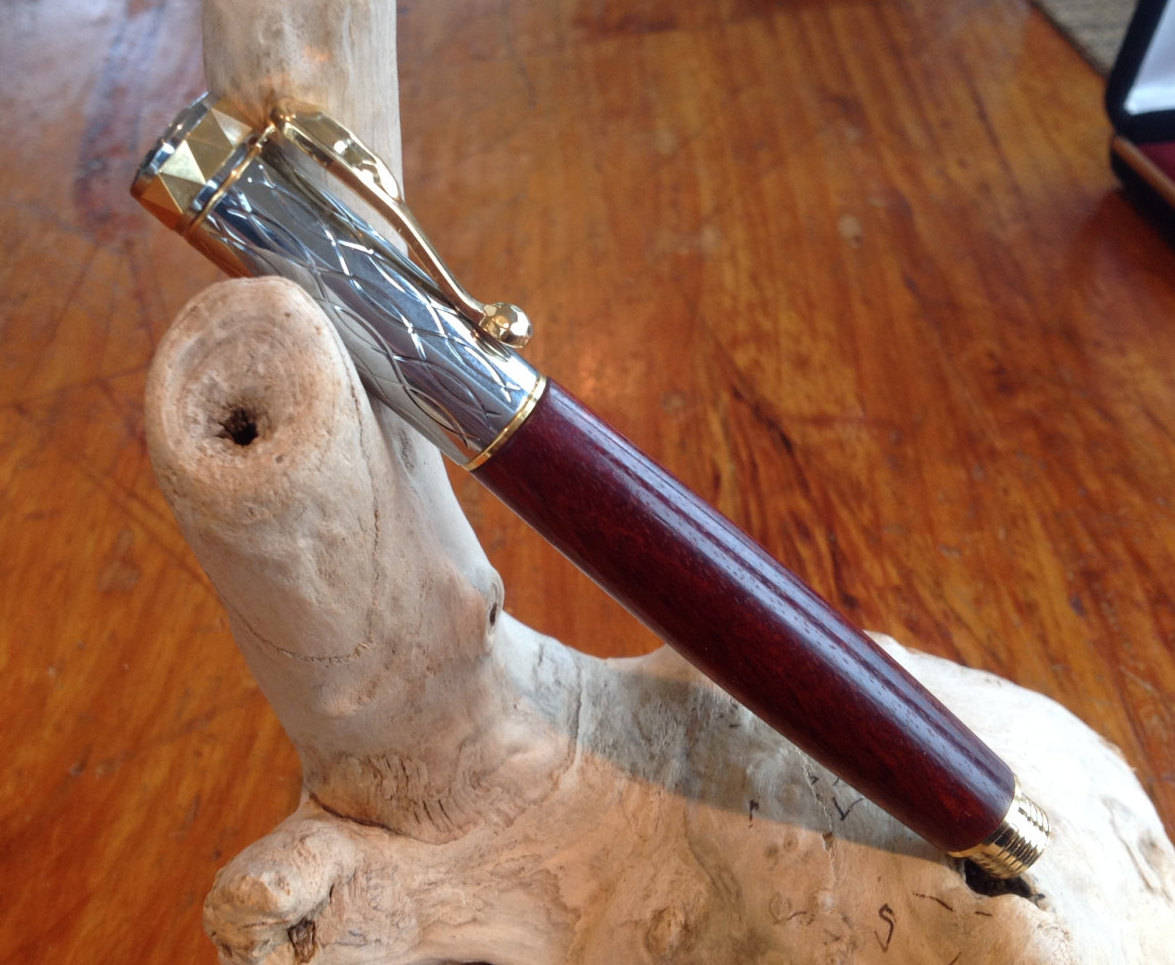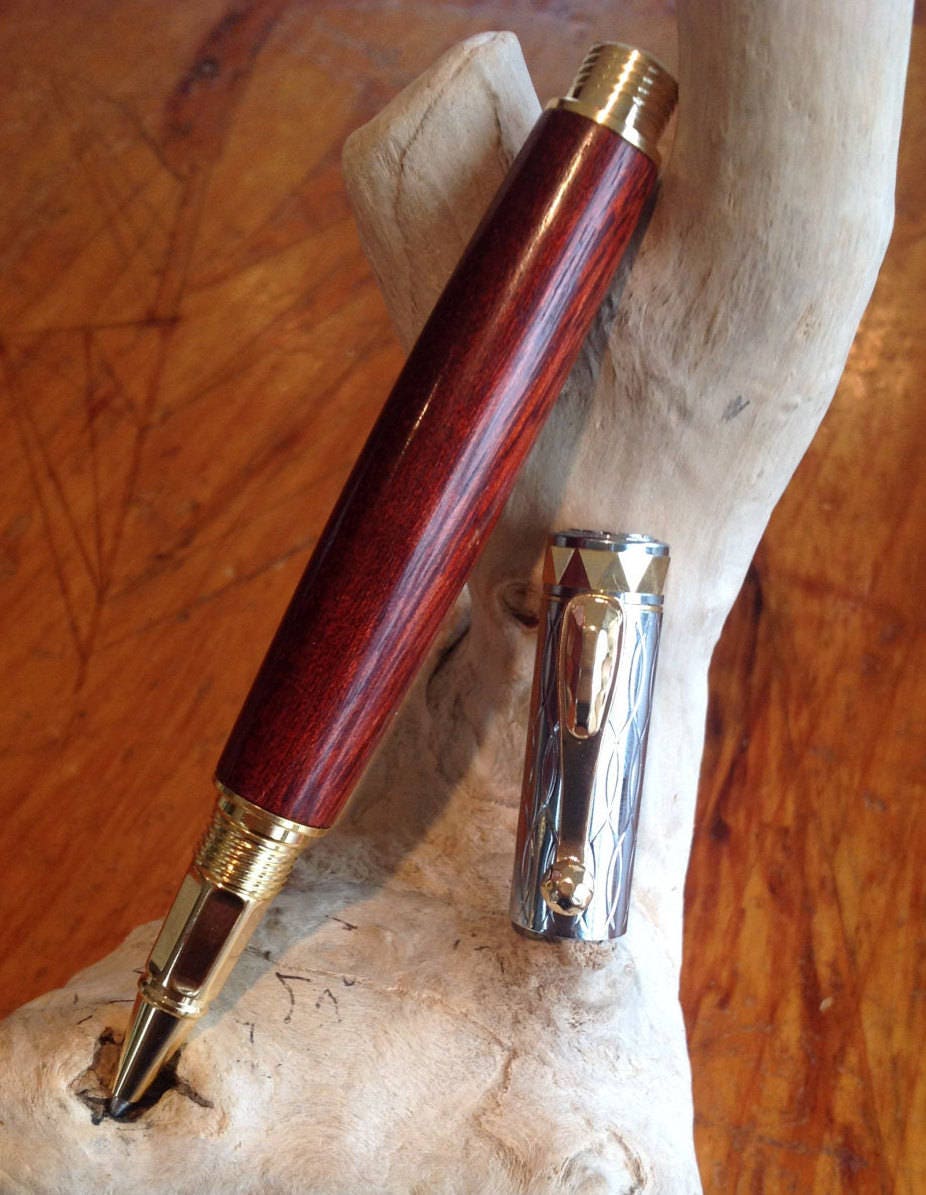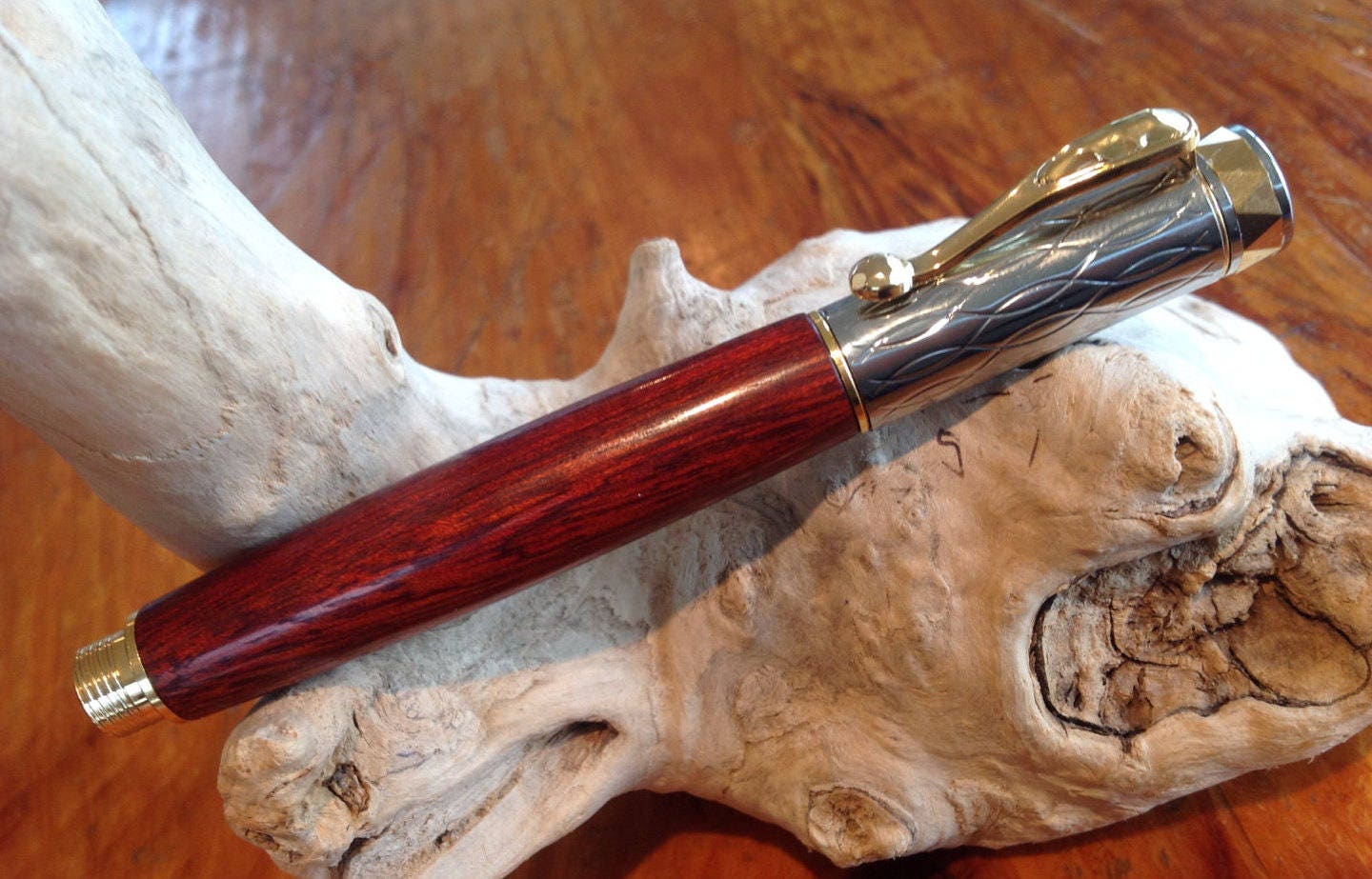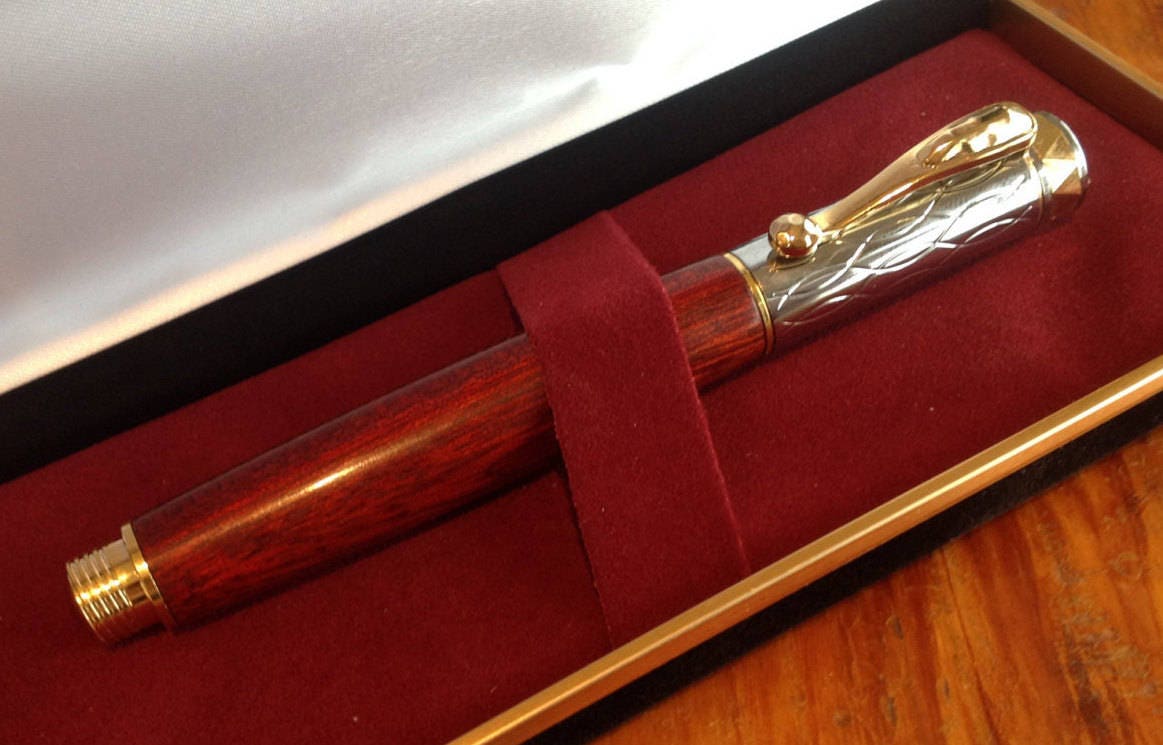Custom Wood Pen made with Alder Burl, Electra Executive Twist Pen W/ Gold and Chrome Trim (#2403)
This a beautiful pen, very handsome and comes with a white satin & red felt lined gift box.
SPALTERED ALDER BURL
LATIN: ALNUS belonging to the birch family Betulaceae. The genus comprises about 30 species of monoecious trees and shrubs, a few reaching a large size, distributed throughout the north temperate zone with a few species extending into Central America and the northern Andes.
Description:
With a few exceptions, alders are deciduous, and the leaves are alternate, simple, and serrated. The flowers are catkins with elongate male catkins on the same plant as shorter female catkins, often before leaves appear; they are mainly wind-pollinated, but also visited by bees to a small extent. These trees differ from the birches (Betula, the other genus in the family) in that the female catkins are woody and do not disintegrate at maturity, opening to release the seeds in a similar manner to many conifer cones.
Alder is particularly noted for its important symbiotic relationship with Frankia alni, an actinomycete, filamentous, nitrogen-fixing bacterium. This bacterium is found in root nodules, which may be as large as a human fist, with many small lobes, and light brown in colour. The bacterium absorbs nitrogen from the air and makes it available to the tree. Alder, in turn, provides the bacterium with sugars, which it produces through photosynthesis. As a result of this mutually beneficial relationship, alder improves the fertility of the soil where it grows, and as a pioneer species, it helps provide additional nitrogen for the successional species which follow.




